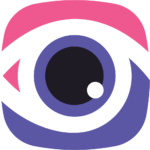Blue light from digital screens isn’t the main culprit behind dry eyes, but prolonged exposure can worsen eye discomfort. Learn how to minimize its impact with practical tips, protective measures, and lifestyle adjustments.
Introduction
You’ve probably heard warnings about blue light and its effects on your eyes. But does it really cause dry eyes? While blue light itself isn’t directly responsible for dryness, the habits associated with screen use—like reduced blinking and prolonged focus—can contribute to the problem. This article will unravel the myths and facts about blue light and dry eyes, providing actionable tips to protect your vision.
What Is Blue Light?
Blue light is a high-energy visible (HEV) light emitted by digital screens, LED lighting, and even the sun. Its short wavelength and high energy allow it to penetrate deeply into the eye, potentially affecting eye health over time.
| Source of Blue Light | Examples |
| Natural Sources | Sunlight |
| Artificial Sources | Smartphones, computers, tablets |
| Indoor Lighting | LED and fluorescent bulbs |
Does Blue Light Cause Dry Eyes?
Blue light itself doesn’t directly cause dry eyes, but its impact on your behavior does. Here’s how:
-
- Reduced Blinking:
When staring at screens, we tend to blink less, leading to faster evaporation of tears and dryness.
- Reduced Blinking:
-
- Digital Eye Strain:
Long hours of screen exposure can cause symptoms like burning, irritation, and a gritty feeling in the eyes, which are commonly associated with dry eyes.
- Digital Eye Strain:
-
- Circadian Disruption:
Blue light exposure in the evening can interfere with sleep cycles, leading to fatigue and worsening eye discomfort the next day.
- Circadian Disruption:
Comparing Blue Light Myths vs. Facts
| Myth | Fact |
| Blue light causes dry eyes. | Blue light doesn’t cause dryness but can exacerbate symptoms. |
| All blue light is harmful. | Moderate exposure, especially from natural sources, is harmless. |
| Blue light blocking glasses solve everything. | Glasses help but don’t address behavioral habits causing strain. |
Tips to Reduce Blue Light Impact on Dry Eyes
-
- Adjust Your Screen Settings:
-
- Enable blue light filters or night mode on devices.
-
- Lower screen brightness to match room lighting.
-
- Adjust Your Screen Settings:
-
- Follow the 20-20-20 Rule:
-
- Every 20 minutes, look at something 20 feet away for 20 seconds to relax your eyes.
-
- Follow the 20-20-20 Rule:
-
- Use Artificial Tears:
-
- Keep lubricating eye drops handy to combat dryness during extended screen use.
-
- Use Artificial Tears:
-
- Wear Blue Light Blocking Glasses:
-
- These glasses reduce exposure to HEV light, making screen time more comfortable.
-
- Wear Blue Light Blocking Glasses:
Pro Tip: Check out How to Create a Dry Eye-Friendly Workspace: Ergonomics, Lighting, and Breaks
Pros and Cons of Managing Blue Light Exposure
| Pros | Cons |
| Reduces eye strain and discomfort | Requires consistent effort to form habits |
| Enhances sleep quality with less evening exposure | May involve purchasing additional tools like filters or glasses |
| Encourages healthier screen habits | Some solutions may not address all symptoms |
Alternative Solutions for Long-Term Relief
Managing blue light exposure is essential, but pairing it with regular eye exercises can significantly enhance overall eye health. VisionUp serves as an excellent tool for this purpose, offering personalized exercise plans designed to target eye strain and dryness. It incorporates proven techniques such as palming and blinking drills, while also tracking your progress to ensure consistent practice and long-term benefits.
Conclusion
Blue light may not directly cause dry eyes, but it can aggravate symptoms by altering your habits. By understanding the role of blue light and adopting eye-friendly practices, you can significantly reduce discomfort and protect your vision. Combine these efforts with guided eye exercises for a comprehensive solution to eye health.
Check out a guide on vision therapy techniques by Lynn Hellerstein, O.D. for children and adults to improve focus, coordination, and visual learning.
